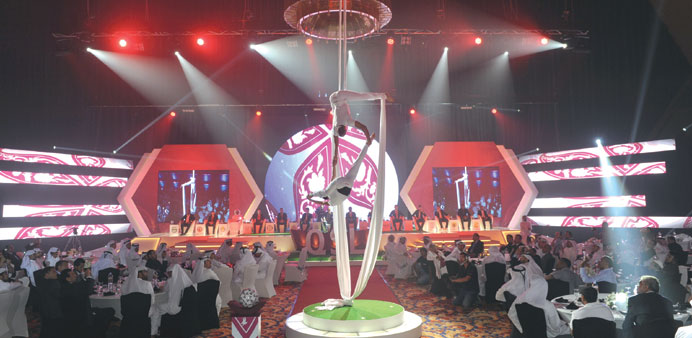By Anil John/Sports Editor
More teams, more money, more matches and more razzmatazz. But will all of it result in more quality and more fans flocking Qatar’s state-of-the-art but largely desolate football stadiums?
That is the question uppermost in every football official’s mind as the 2013-14 Qatar Stars League (QSL) kicks off today with a match between defending champions Al Sadd and Al Rayyan at Sheikh Jassim bin Hamad Stadium.
The official launch of the eight-month long tournament yesterday at the Sheraton did not betray any fears of it not living up to expectations. On the contrary, a short, glitzy ceremony highlighted by an energetic display by two acrobats sent out a positive message.
There is no mistaking the organisers’ determination, even desperation, to take the tournament to greater heights. Several new initiatives have been launched to involve the expatriate community in the affairs of the Qatar Football Association (QFA). Active cooperation from dozens of schools has been sought and a new league involving expatriates is expected to take shape soon.
Football authorities have for long wrestled with the issue of generating more interest among the expats, but without much success. But now there is a “now-or-never” kind of urgency about the whole thing.
It’s all too obvious why. The 2022 FIFA World Cup is just nine years away, and Qatar being the hosts qualify for the event automatically. But automatic qualification is not an achievement in itself by any yardstick, unless the team makes an impression by pulling off an upset or two or at least progressing past the group stage.
It is imperative, therefore, that football standards are raised considerably by the time Qatar 2022 is upon us. A meek surrender in front of the home fans would be a complete disaster, what with the highly skeptical world media waiting for another chance to have a go at the country with its so-called negatives – from the weather to issues of democracy and labour rights, and everything else thrown into the mix.
It’s something Qatar can do without. The best way to silence the critics is by performing well – both on and off the field. What good, after all, if the organisation of the tournament goes off fantastically well but the team fails to make an impression?
That in part explains why the league has been expanded to 14 teams from 12. Al Sailiya, who finished at the bottom of the QSL last season, have not been demoted while Al Ahli and Muaither Sports Club have qualified for the top flight by virtue of being the winners and runners-up of the Second Division.
The logic behind this is that many of the younger Qatari players would get to play in the top division, gain crucial experience and mature in time for the World Cup. Authorities aim to have a larger talent pool in a few years so that the national team can be competitive in 2022.
“Having 14 teams in the tournament is part of our long-term strategy to take football to a much-higher level,” QSL Deputy CEO Hani Ballan told Gulf Times at yesterday’s launch.
“By doing so a lot of young players will be exposed to the rigours of the game. It will help them toughen up and qualify for World Cup selection. It’s an idea that has a lot of support within the QSL and outside,” he added.
Ballan revealed that more money is being pumped into clubs so that they can put their plans into action in their bid to produce quality players.
“We have given the clubs increased budgets to try out new approaches. Twenty-four schools have been enlisted in our programme to produce talent. The schools will be affiliated to the clubs and the cooperation between them will definitely produce the desired results.”
This season’s QSL is expected to give a fair indication of the things to come.



